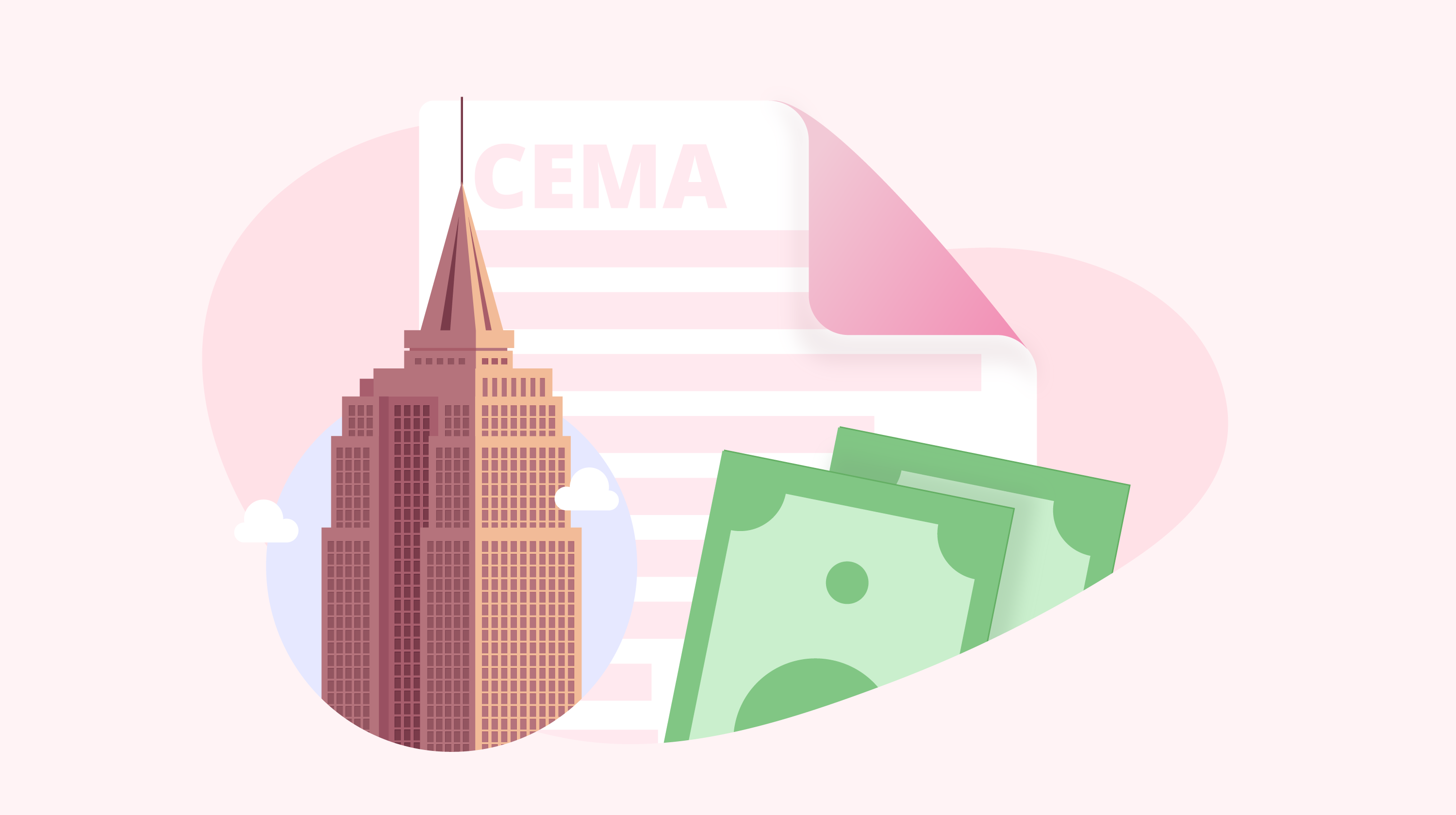Are you curious about a CEMA Loan? Read this post to learn everything about CEMA loans, Purchase CEMA, and much more.
There are many cost components that make up the net closing costs of a property. Mortgage recording tax happens to be one of them which is a hefty amount paid to document a loan transaction in New York and 6 other states.
New York charges the highest recording tax at 2.17% that can constitute around 47% of total closing costs.
An average new york resident pays more than $11,000 as recording tax on a property worth 650k with a conventional mortgage.
However, all that money can be saved using a special type of loan called the CEMA loan, a popular refinancing financial tool often used by NY residents to drastically cut down closing costs. But how does it work? What are the advantages and disadvantages of this loan? And most importantly, is it even worth applying for one?
If you have these questions, this post will answer them all. So let’s dive right into it.
What is a CEMA Loan or CEMA Mortgage?
First of all, a CEMA is not a type of loan, it is an agreement.
The CEMA, or Consolidation, Extension, and Modification Agreement is a type of agreement between the lenders that allows residents of New York state to refinance their loan while paying mortgage recording tax only on the difference between their new mortgage and the unpaid principal balance such as closing costs or cash out.
Let’s understand this with the following example.
- Price of property - $750,000
- Closing Costs - $24,425
- County Tax Rate - 2.17%
Without a CEMA loan, the homeowner will pay 2.17% of $750,000 = $16,275 as taxes
With a CEMA loan, the homeowner will pay 2.17% of $24,425 = $530 as taxes.
Refinancing with CEMA will save them straight up $15,745 in the transaction. However, buyers will have to pay a fee of $1400 for the CEMA transaction.
Many of you might not have heard about a mortgage recording tax due to the fact that it is only applicable in 7 states in the country. These are Alabama, Florida, Kansas, Minnesota, New York, Oklahoma, and Tennessee.
While Tennessee charges the lowest mortgage recording tax rate, New York charges 2.17% of the total property value, which happens to be the highest.
CEMA might be a great way to refinance your mortgage without paying a hefty mortgage recording tax but that is not the only advantage. CEMAs are also used to sell property from one owner to another. This is called purchase CEMA.
What is a Purchase CEMA?
The purchase CEMA is an agreement between the lenders that allows the buyer to take over the seller’s unpaid principal loan amount without having to pay the mortgage recording fee up to the unpaid principal of the seller.
In other words, the buyer is only obliged to pay mortgage recording tax on the difference between their new mortgage amount and the unpaid principal balance. The agreement for a purchase CEMA is done between the lenders of both parties.
Let’s understand this with an example
- Price of the property - $750,000
- Unpaid Principal of Seller - $600,000
- Buyer’s Loan Amount - $600,000
In this scenario, the buyer will pay $0 as mortgage recording tax with CEMA. This is because the unpaid principal amount is equal to the buyer’s loan.
How much does a CEMA save?
Alternatively, without a CEMA loan, the mortgage recording tax of $11,550 will be applied to the transaction. However, the buyer will pay a sum of $1,400 to process the CEMA loan.
Make note that a purchase CEMA is not worth it when the unpaid principal is insignificant compared to the buyer’s loan amount. For instance, if the unpaid principal in the above example is $50,000 then a CEMA would only save you $962 while the buyer would be spending $1,400 as CEMA fees on the other hand.
This brings us to the question on when to go for a CEMA mortgage and when to avoid them. There are multiple conditions based on which you should either choose CEMA or go for a conventional loan.
Who qualifies for a CEMA Loan?
- The buyer or the property owner should be a resident of New York state.
- Should have a minimum FICO score of 680.
Is a CEMA Loan worth it?
- Buyers should go for a CEMA Loan when the seller wants to modify their existing mortgage and give it to the buyer.
- If you are a New York resident, you should always look for a CEMA loan as it can drastically bring down the overall closing costs.
- If you are planning to refinance from the same bank. Switching banks will levy charges of the new bank that you will have to pay.
When should you avoid a CEMA Loan?
- All property types can be purchased with a CEMA loan except Co ops. Hence, if you are planning to buy a Co op with a CEMA Loan, it is not possible.
- When the unpaid principal of the seller is very less (less than 10%), you should avoid CEMA as it won’t save you much
Benefits of a CEMA Loan
While we have seen the advantage of mortgage tax saving of CEMA loans in refinancing, it also has multiple benefits for buyers and sellers.
Benefits for Buyers
- Buyers can take advantage of a lower interest rate on the seller’s existing unpaid mortgage.
- The buyer can also negotiate upgrades with the seller with a CEMA mortgage.
- Reduces the closing costs by a great degree.
Benefits for Sellers
- The seller pays a reduced transfer tax in NY ($4 for $1000)
- Splitter agreement between buyer and seller halves the mortgage tax savings in the purchase process.
Disadvantages of a CEMA Loan
While CEMA can potentially save you thousands of dollars, it comes with its own share of disadvantages. These are:
- CEMA Loans are provided by a limited number of lenders and banks.
- For a purchase CEMA, the buyer must get the seller’s consent. Additionally, the buyer needs an attorney and a mortgage broker to get a purchase CEMA approved.
- CEMA Loans take a longer time to process, up to 6 months in some cases.
- Refinancing with a CEMA Loan does not make sense if a large part of the initial mortgage has been already paid.
- An exclusive CEMA fee is charged for these loans.
New York residents pay a lot of money into closing costs and mortgage recording tax contributes to almost half of the share. CEMA loans cut down the mortgage recording tax, making loans more affordable to the residents of New York state.




